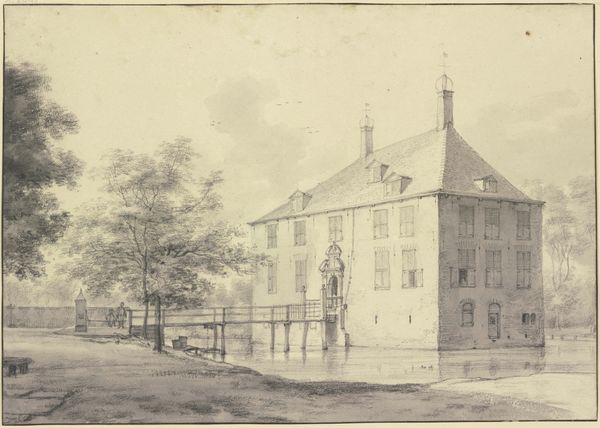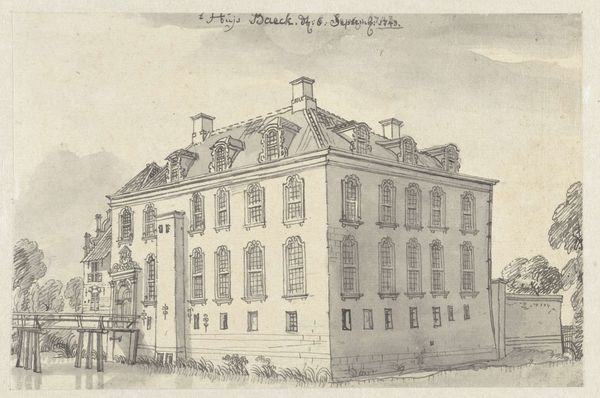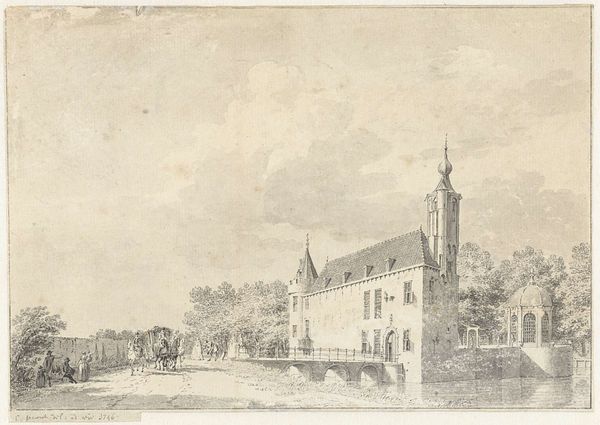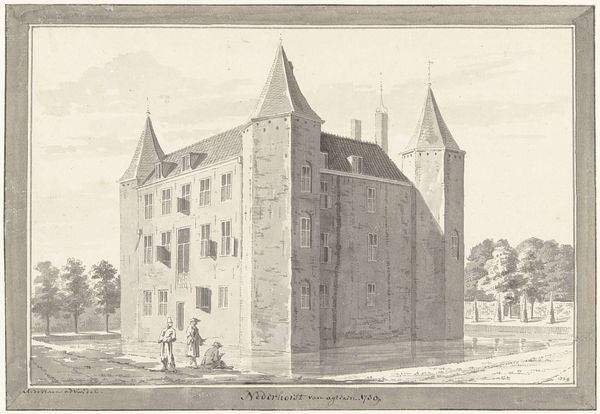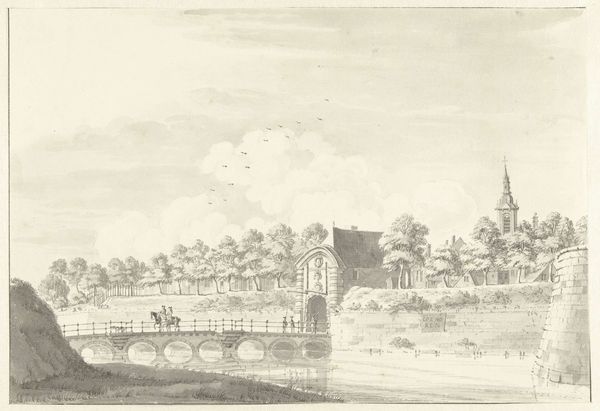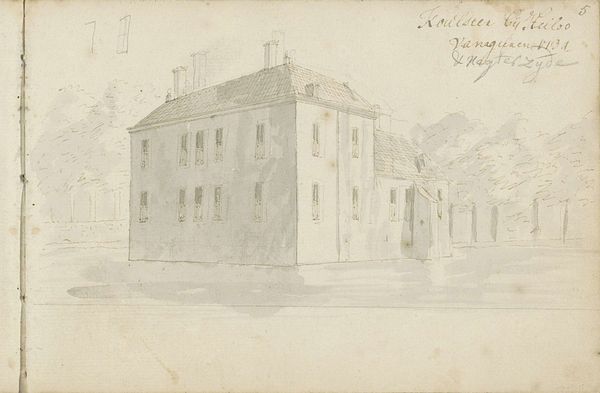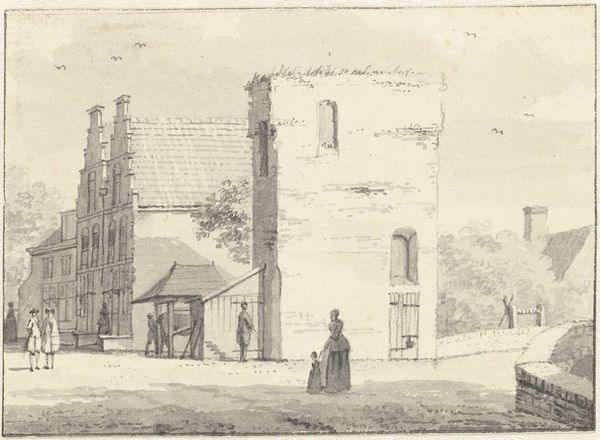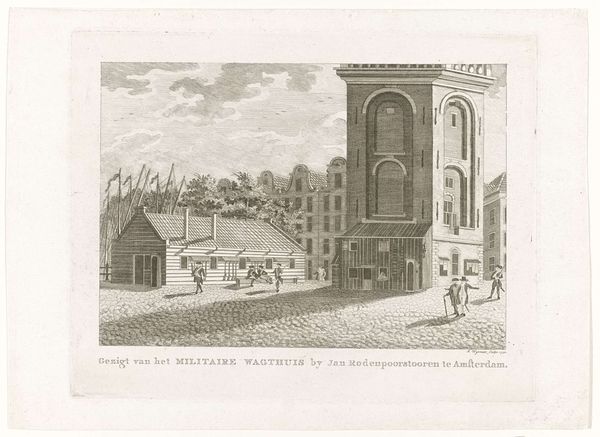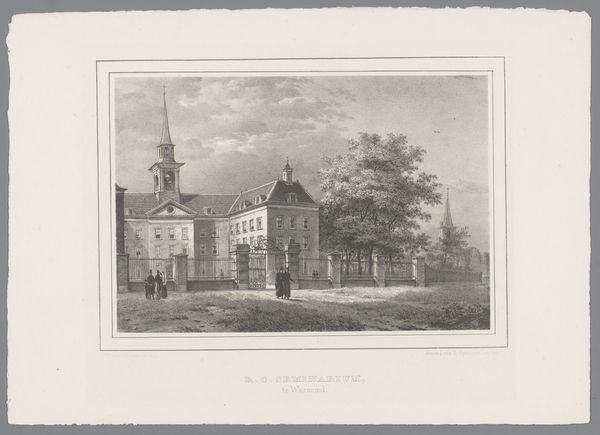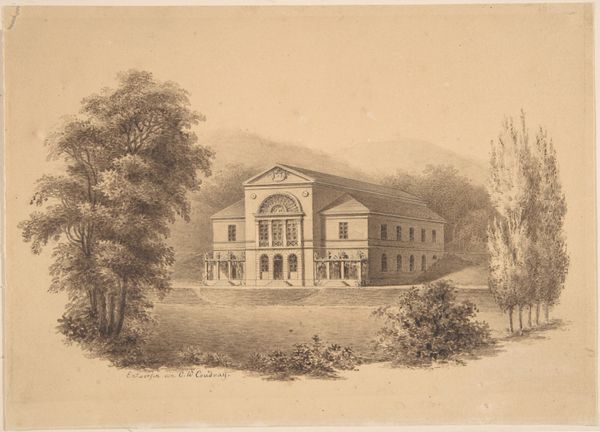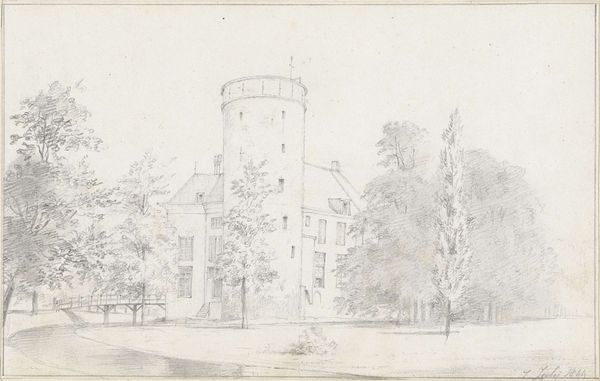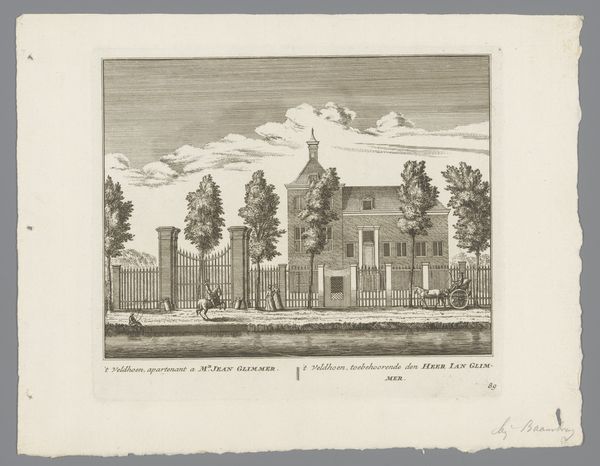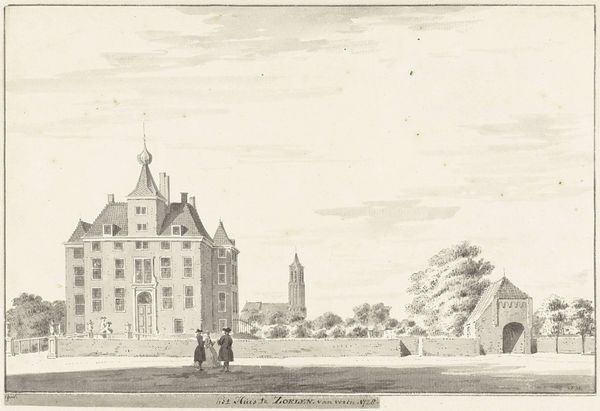
drawing, paper, ink
#
drawing
#
landscape
#
paper
#
ink
#
romanticism
#
19th century
#
cityscape
Dimensions: height 177 mm, width 204 mm
Copyright: Rijks Museum: Open Domain
Editor: We're looking at "Kasteel Zuylestein," a drawing made with ink on paper, dating from 1820 to 1872, by Hendrik Abraham Klinkhamer. It feels quite formal and reserved to me, especially in its muted tones. What do you see in this piece? Curator: I'm drawn to the materiality itself – the ink, the paper. Consider how the choice of ink, a relatively accessible medium, allows for a certain dissemination of this image. Was Klinkhamer aiming for widespread distribution, perhaps documenting a specific moment in the castle's history or social life? The precision of the ink drawing suggests a concern with factual representation, even amidst a Romantic style, yes? Editor: That’s a great point! So, you're suggesting we should look at the choice of ink not just as a stylistic element, but as a conscious decision about production and access? Curator: Precisely! How does the act of representing Zuylestein in ink and paper reflect the social context of its time? Think about the availability of paper, the skill required for detailed ink work. Who was consuming these images and why? Is it about commemoration or simply about documenting an architectural landscape? Editor: It's fascinating to consider the accessibility and skill involved. Did the rise of similar techniques democratize landscape art in any way during the 19th century? Curator: That’s certainly something to consider! While paintings were often the purview of the wealthy, could drawings like this have played a role in shaping broader public perceptions of places like Zuylestein? Examining the economics of art production helps us to understand that broader distribution of imagery. What does the consumption of images tell us about the culture and society that consumes it? Editor: I never thought about it that way before; to analyze how it was made and its use back then, and relate that back to what was being consumed at the time by its intended audience. Thank you. Curator: Considering the production and consumption is crucial for a complete understanding of its value and impact. I appreciate that this made you think.
Comments
No comments
Be the first to comment and join the conversation on the ultimate creative platform.
